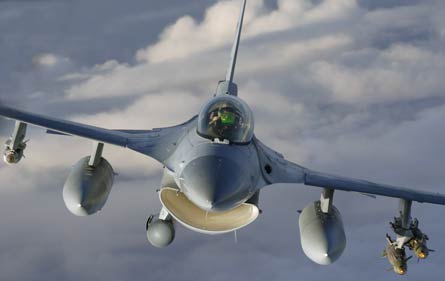The past year has seen air power called into action in combat operations in the Middle East, south Asia and Africa.
Air forces around the world are still digesting the lessons from the past year’s air combat in Afghanistan, Chad, Iraq, Lebanon, Sri Lanka and Sudan, but initial reports suggest the fall-out from these conflicts will be felt for many years. The nature and intensity of the hostilities came as a surprise to many and saw air forces having to improvise solutions to new and innovative threats.
 © USN |
|---|
The US Navy’s Super Hornet fleet is rising to the challenge of combat operations |
Israel’s onslaught against Hezbollah guerrillas in Lebanon in July and August was perhaps the highest-profile conflict this year, with the full might of the state’s air power unleashed. Strategic strikes were launched against infrastructure targets around-the-clock intelligence, surveillance and reconnaissance (ISR) missions were flown to detect fleeting targets close air support of ground troops was provided by attack helicopters and special-forces raids were conducted using transport helicopters.
This was the first time the Israeli military had built a campaign around the strategic use of air power, and the disappointing results have prompted much soul-searching in the nation’s defence and political circles.
The air force’s apparent inability to end the rocket attacks on Israel’s northern cities has caused critics to question the military’s emphasis on high-technology warfare at the expense of traditional ground forces.
Supporters of Israeli air power question the government’s strategy, which was based on the flawed belief that the weak Lebanese government could be coerced by the destruction of its infrastructure into evicting Hezbollah fighters from its land.
 © USAF |
|---|
US Air Force F-16s continue to provde close air support in Iraq |
Innovative tactics
Hezbollah’s innovative missile tactics and camouflage techniques have also raised questions about the potential danger in any pre-emptive air campaign against Iran’s nuclear infrastructure. Meanwhile, the performance of Iranian-sourced missiles against Israeli land and naval targets during the conflict suggests Tehran’s armed forces could be a formidable opponent in any future confrontation with US forces.
NATO peacekeeping troops have found themselves locked in vicious fighting with resurgent Taliban guerrillas in southern Afghanistan since earlier this year. The central Asian country’s demanding terrain and the small size of the NATO ground component means the International Security Assistance Force must rely heavily on aircraft to provide mobility, protection and logistic support.
The Afghan operation has exposed the shortage of helicopters - attack, reconnaissance and lift - among many NATO members. The Netherlands and the UK have both found their helicopter forces stretched to the limit by their Afghan commitments.
Canada has had to rely totally on the USA to provide helicopter support for its 2,200-strong contingent, prompting its decision to buy 16 Boeing CH-47 Chinooks by the end of the decade. The Netherlands has also announced plans to expand its helicopter fleet, but the UK has yet to voice any plan to reinvigorate its battlefield lift capability.
Afghanistan’s remote location has also stretched NATO’s strategic airlift capability to the limit, prompting the alliance to sign up to a long-term leasing arrangement with a Russian consortium. Even this might not be enough to fill the capability gap, with a group of alliance members now looking to lease or buy up to four Boeing C-17s. Australia and Canada, meanwhile, ordered their own C-17s to bridge their airlift capability gaps.
Air support for US-led coalition forces in Iraq over the past year has resulted in very different lessons emerging, particularly the application of non-kinetic effects in counter-insurgency operations. The integration of air and land operations in the complex Iraqi scenario has taxed US and UK air commanders.
 © USAF |
|---|
Transport aircraft have supported the Darfur peacekeeping force |
Critical issue
At the same time, decentralising control of airborne ISR platforms to overcome bureaucratic bottlenecks in the exploitation of their intelligence is emerging as a critical issue.
The re-ignition of Sri Lanka’s two-decade-old conflict with Tamil Tiger separatists has seen the country’s air force thrown into action. The rebels’ extensive use of naval forces has prompted the Sri Lankan air force to employ considerable resources to monitor the seas surrounding the island state.
In Africa, airpower has played an important role in the conflicts that have ravaged the Darfur region of Sudan. The Khartoum government uses east European-supplied combat aircraft and helicopter gunships extensively to fight rebel forces, while the government of neighbouring Chad has also used its small air force to drive off a rebel push on its capital. The rebels, in turn, have used Antonov transports to move forces into the country.
The past year has seen a dramatic surge in air combat operations across the world. In Afghanistan alone, more than 1,000 close air support sorties were flown in September. The nature of air operations during the year suggests that air forces must remain highly flexible in order to adapt to new threats in unusual combat zones.
Tomorrow’s air forces will not be able to stand still if they are to remain relevant in 21st century warfare.
Source: Flight International























